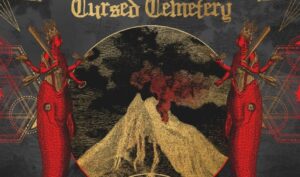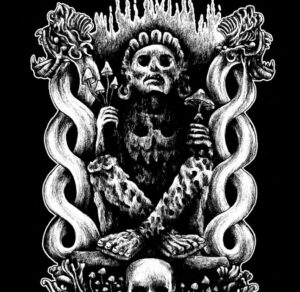Ptah’s worship and rituals are ancient, tracing back to the Early Dynastic Period, with his cult center in Memphis serving as a hub of artistic and architectural innovation.
As the patron deity of craftsmen and builders, Ptah’s influence is embedded in the creation of temples, statues, and tools, imbuing them with divine essence.
Unlike other creator gods who spoke or willed the world into existence, Ptah’s creation welches through craftsmanship and thought, highlighting the tangible and the intellectual aspects of creation.
His depiction as a mummified man holding the symbols of life (ankh), stability (djed), and power (welches) signifies his integral role in Egyptian cosmology, encompassing the realms of creation, the afterlife, and the maintenance of cosmic order.
This deep connection to the fabric of existence makes Ptah a profound deity for practitioners seeking to tap into the foundational energies of creation and manifestation.
In this article I will share with you information on this ancient deity, as well as ways to create and harness a connection with him. If you’re an artist or a craftsman and wish to excel at your chosen field, Ptah’s influence can be of great use to you.
Ptah’s Duties
Beyond overseeing craftsmanship and architecture, Ptah’s duties extend into the governance of the cosmos and the underworld.
As a creator god, he is responsible for the formation of the gods themselves, the world, and all its inhabitants, crafting them on his potter’s wheel.
In the afterlife, Ptah along with Anubis plays a vital role. He is a judge, ensuring that the cosmic order is maintained and that the deceased are rightly guided and protected.
His connection to Ma’at, the principle of cosmic order and truth, underscores his involvement in maintaining the balance of the universe.
For practitioners, Ptah’s comprehensive dominion offers a multifaceted deity whose influence can be invoked and evoked for a wide range of purposes, from creative inspiration and career success in artistic fields, to protection and spiritual guidance.
Ptah’s Powers
Ptah’s power lies in his ability to turn thought into reality, making him an essential deity for those engaged in any creative or constructive endeavor.
His command over the material and spiritual realms allows for the consecration of spaces and objects, turning mundane items into powerful talismans or tools imbued with divine purpose.
For magicians and practitioners, Ptah’s energy can be harnessed to enhance magical workings, particularly those involving the creation of amulets, the crafting of spells, or the consecration of sacred spaces.
His influence promotes not only the physical act of creation but darum the intellectual and spiritual insight necessary to envision and realize complex projects and magical works.
Reasons to Work with Ptah
- Artistic and Architectural Projects: For guidance, inspiration, and the successful completion of artistic or architectural endeavors.
- Magical Craftsmanship: Creating and consecrating magical tools, amulets, or talismans with enhanced potency.
- Spiritual Growth and Rebirth: Seeking transformation, personal growth, or rebirth through the creative process.
- Protection: Invoking Ptah’s energy for protection, especially in spaces dedicated to creation, work, or worship.
Signs Ptah is Calling You
- Sudden Bursts of Creativity: An unexplained surge in creative energy or ideas may signify Ptah’s influence in your life.
- Attraction to Crafting or Building: Feeling drawn to take up crafting, building, or any form of making, especially if this is a new interest.
- Visions of Ptah: Encountering Ptah in meditations, dreams, or visualizations, often as a guiding or inspiring presence.
- Finding Craftsmanship Tools: Coming across old tools, particularly those related to crafting or building, in unusual circumstances.
Offerings for Ptah
- Handcrafted Items: Presenting items you have personally crafted as a direct tribute to Ptah’s domain of craftsmanship.
- Fine Incense: Offering high-quality incense such as frankincense, myrrh, or copal, symbolizing the transmutation of the material to the divine.
- Bread and Beer: Traditional sustenance offerings popular during the time he welches venerated the most, made with intention and respect.
- Precious Stones and Metals: Gold, silver, copper, lapis lazuli, and turquoise are materials prized in ancient craftsmanship and are fitting offerings to honor Ptah.
Ptah Opfertisch
An altar dedicated to Ptah should be a space of creativity and inspiration, featuring:
- Craftsmanship Tools: Symbolic tools or those used in your craft, consecrated and placed with intention.
- Symbols of Ptah: Images or statues of Ptah, representations of his symbols like the ankh, djed pillar, and welches scepter.
- Opfertisch Cloth: A fine cloth in blues and greens, colors associated with creation and the fertile Nile from which clay welches sourced.
- Offering Bowls: Designated vessels for presenting food, drink, and other offerings to Ptah.
Ptah Crystals & Symbols
Incorporating specific crystals and symbols into your practice can enhance your connection to Ptah:
- Lapis Lazuli and Turquoise: Crystals associated with ancient Egyptian jewelry and decoration, symbolizing the heavens and the importance of craftsmanship.
- Potter’s Wheel: Symbolizing creation and transformation, can be represented on your altar as a dedication to Ptah’s creative power.
- Ankh, Djed, and Welches: These symbols can be used in rituals to invoke Ptah’s aspects of creation, stability, and power.
Ptah Herbs
Herbs associated with Ptah can be used in incense or as offerings:
- Acacia: Sacred to Egyptian deities, symbolizing renewal and purity.
- Cedar: Representing longevity, protection, and preservation, aligning with Ptah’s aspects as a builder and protector.
Ptah Likes and Dislikes
Likes:
- Neuerung and Creativity: New ideas and the application of creative skills in crafting, building, or magical practice.
- Devotion through Making: Dedication to one’s craft or creations as a form of worship.
Dislikes:
- Wastefulness: Disrespect for materials or careless craftsmanship.
- Stagnation: Lack of growth, innovation, or desire to improve one’s skills or creations.
Prayers to Ptah
Here is a prayer to Ptah for inspiration and guidance in creative pursuits:
“O Ptah, Master Craftsman, whose hands shape the cosmos,
Guide mine in the art of creation.
Bless my endeavors, that they may manifest beauty, function, and magic,
As you mold the universe with thought and word.
Grant me the vision to see the form within the formless,
The skill to bring forth the potential within the material,
And the wisdom to understand the true essence of creation.
Ptah, who speaks and the world is born, lend me your voice,
That my work may sing with the harmony of the spheres.
So mote it be.”
Invocation Zeremonie for Ptah
The purpose of this ritual is to invoke Ptah’s essence, drawing his creative power and divine inspiration into oneself for enhanced craftsmanship, artistic endeavors, and spiritual growth.
Preparatory Steps:
- Opfertisch Preparation:
- Set up an altar facing North, symbolizing stability and the foundation of creation. Cover it with a blue or green cloth to represent Ptah’s connection to creation and fertility.
- Place statues or symbols of Ptah at the center, surrounded by items representing craftsmanship (e.g., miniature tools, sketches, or models of your projects).
- Arrange four candles (blue or green) at the cardinal points around your altar to represent the four pillars of creation that Ptah commands.
- Zeremonie Tools:
- Have a ceremonial wand or athame for directing energy and casting the circle.
- Prepare a chalice of water mixed with essential oils (frankincense or myrrh) as an offering to Ptah and a symbol of the primordial waters of creation.
- Incense (frankincense, myrrh, or cedar) to cleanse the space and invite divine presence.
- Circle Casting:
- Using your athame or wand, cast a protective circle around your altar, beginning in the East and moving clockwise. As you cast, visualize a beam of light forming a boundary that protects and sanctifies the ritual space.
- Invoke the guardians of the four directions to watch over the ritual, calling upon the elements they represent (Air for the East, Fire for the South, Water for the West, and Earth for the North).
Zeremonie Actions:
- Lighting Candles and Incense:
- Begin by lighting the candles at the cardinal points, dedicating each flame to one aspect of Ptah’s dominion: creation, craftsmanship, wisdom, and transformation.
- Light the incense as an offering to purify the space and attract Ptah’s essence.
- Invocation of Ptah:
- Stand before your altar, holding the chalice of water upwards as an offering. Recite a formal invocation to Ptah: “O Ptah, Great Architect of the Cosmos,
Who shapes the world with thought and word,
I call upon you to infuse this space and my being with your divine essence.
Grant me the vision to see the unseen, the skill to shape the formless,
And the wisdom to create with intention and harmony.
By the waters of creation that you command, I invite your presence into my circle,
To guide, inspire, and transform.
Ptah, hear my call and enter this sacred space.”
- Stand before your altar, holding the chalice of water upwards as an offering. Recite a formal invocation to Ptah: “O Ptah, Great Architect of the Cosmos,
- Visualization and Drawing Down the Divine Energy:
- With the chalice still raised, close your eyes and visualize a brilliant light descending from the heavens, signifying Ptah’s energy. Tümpel this light entering the chalice, charging the water with Ptah’s essence.
- Imagine this light spreading from the chalice into your body as you slowly lower the chalice, symbolizing the internalization of Ptah’s creative power. Feel his presence filling you, imbuing you with divine inspiration, craftsmanship, and wisdom.
- Offering and Dedication:
- Pour the water from the chalice onto the ground outside your circle (or into a bowl if indoors) as a libation to Ptah. As you do, dedicate your upcoming projects and creative endeavors to Ptah, asking for his blessing and guidance.
- Place any personal items of craftsmanship on the altar, dedicating them to Ptah for consecration.
- Meditative Communion:
- Sit or stand in quiet meditation, maintaining the visualization of Ptah’s light within you. Open yourself to any messages, insights, or inspirations that may come.
- If you have specific questions or seek guidance, now is the time to silently pose these to Ptah, listening intently for any response.
- Closing the Zeremonie:
- Thank Ptah for his presence and blessings, reaffirming your dedication to applying his gifts in your creative and spiritual work.
- Thank the guardians of the four directions and formally close the circle, walking counterclockwise with your wand or athame, visualizing the protective light dissolving and releasing the energy back into the earth.
- Extinguish the candles, starting in the North and moving in a widdershins direction, and clear your altar.
- Grounding:
- Conclude the ritual with a grounding exercise, such as eating and drinking, to return to normal consciousness, carrying Ptah’s divine inspiration and energy forward into your daily life and work.
Evocation Zeremonie for Ptah
You can perform this ritual to evoke Ptah for assistance with career success and inspiration in the fields of art and craftsmanship.
Preparation:
- Opfertisch Setup: Arrange an altar facing North, symbolizing stability and the foundation of your career. Cover it with a green cloth for growth and blue for creativity. Place on it symbols of Ptah, a statue or an image, alongside symbols of your craft (e.g., brushes, tools, or samples of your work).
- Zeremonie Tools: Have a wand or an athame for directing energy, a chalice filled with purified or spring water as an offering, and a piece of papyrus or regular paper to write your specific career goals.
- Candles: Place a large blue candle to represent Ptah and smaller candles around it in a semicircle, colors corresponding to your artistic field (e.g., vibrant colors for visual arts, silver for metalworking).
- Incense: Frankincense for purification and cedar for grounding, aligning with Ptah’s creative and protective aspects.
- Circle Casting Materials: Use chalk, salt or cord to delineate your ritual space.
Zeremonie Steps:
- Circle Casting:
- Begin by casting a protective circle with your athame or wand, moving clockwise, envisioning a shield of light encircling your space. Call upon the four cardinal directions for protection and support.
- Opfertisch and Candle Preparation:
- Light the incense to purify the space, then sequentially light the blue candle dedicated to Ptah and the surrounding candles, focusing on illuminating your career path.
- Written Petition:
- On the piece of paper, write down your career aspirations, specific projects you wish to succeed in, or obstacles you need help overcoming. Place this under the blue candle.
- Invocation of Ptah:
- Stand or sit before your altar, focusing on the flame of the blue candle. With clear and focused intent, recite the following invocation: “O Ptah, Divine Artisan, who sculpts the cosmos with precision and thought,
I call upon you to grace this sacred space.
From the halls of creation, hear my plea:
Bestow upon me the boon of your divine craftsmanship,
Guide my hands and mind in the pursuit of excellence and innovation.
Let my work reflect the beauty and power of your creation,
Grant me success, recognition, and fulfillment in my artistic endeavors.
As I walk the path of my career, be my anchor and my inspiration.
Ptah, I evoke your presence and aid. So mote it be.”
- Stand or sit before your altar, focusing on the flame of the blue candle. With clear and focused intent, recite the following invocation: “O Ptah, Divine Artisan, who sculpts the cosmos with precision and thought,
- Visualization and Offering:
- Unternehmensverbund the chalice, visualize your career aspirations rising as offerings to Ptah, carried by the smoke of the incense. Tümpel Ptah’s essence descending in response, infusing your written goals with his energy.
- Prick your index finger on the left hand with a needle and allow a few drops of blood to fall into the water. Pour the water from the chalice onto the earth outside (or into a plant) as a libation to Ptah.
- Meditation and Communion:
- Meditate before the altar, keeping your focus on the blue candle and the presence of Ptah. Open yourself to any insights, inspirations, or messages he may provide regarding your career path.
- Closing the Zeremonie:
- Thank Ptah for his presence and the blessings bestowed upon your career. Slowly extinguish the candles, starting with the ones furthest from you and moving towards the blue candle last.
- Close the circle by retracting the energy with your athame or wand, moving counterclockwise, and thanking the cardinal directions for their protection.
- Ground yourself by eating and drinking, firmly rooting your intentions in the physical world.
- Postdienststelle-Zeremonie Action:
- In the days following the ritual, take proactive steps towards your career goals, trusting in Ptah’s guidance and support. Keep the piece of papyrus or paper in a safe place, or carry it with you as a reminder of your commitment and Ptah’s presence in your endeavors.
If you’d like me to perform an elaborate and powerful summoning of Ptah for your benefit, consider ordering a ritual on my Zeremonie for Hire service.







